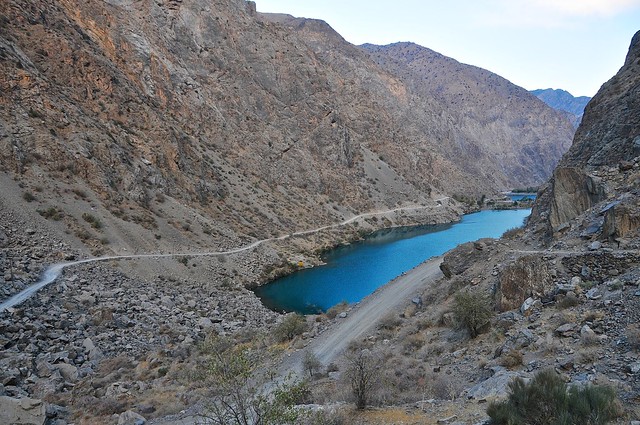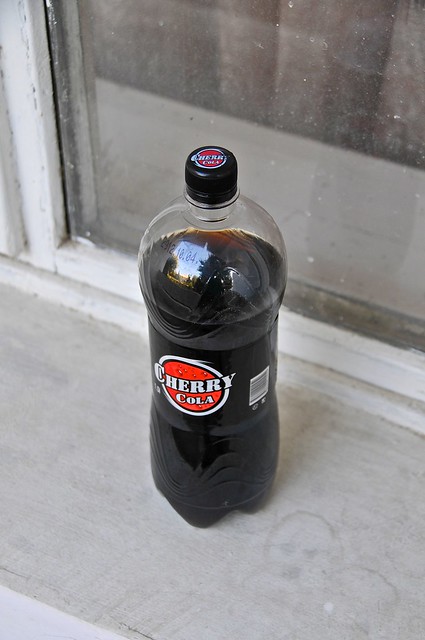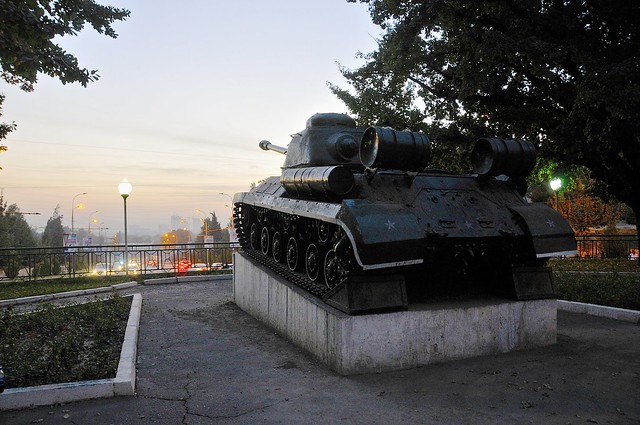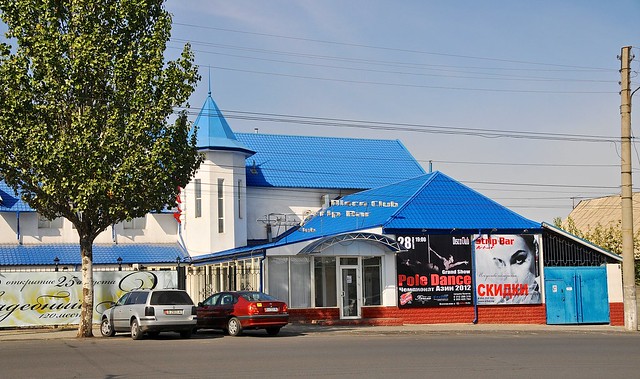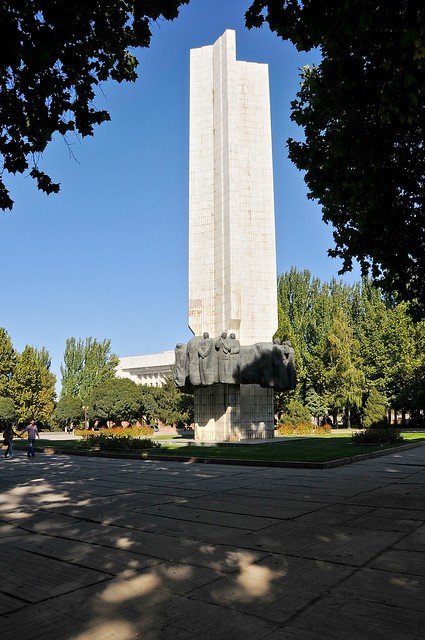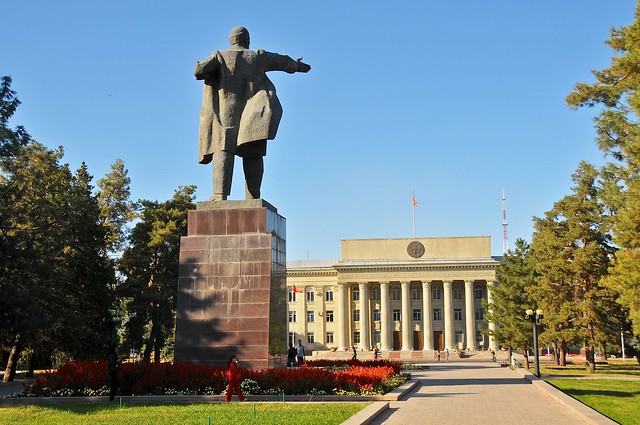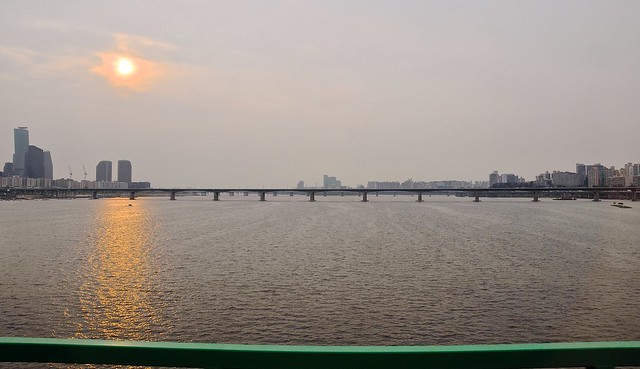 |
Rolling over the Hangang river and into Seoul via KTX.
|
Seoulwise—a great non-partying hostel in Hongdae
Hostels in large, popular cities are essentially fungible, and don't really need reviews or descriptions unless they're pretty exceptional. And usually, exceptional means they're exceptionally bad.
Seoulwise is an exception, as it is one of the best-run hostels I've ever stayed at.
The big reason for this is the owner, Mr. Young, who is basically there all the time and knows everyone who is staying there. As someone who has traveled a lot himself, he has a good understanding of what travelers want. Young manages to treat everyone like they are actually his guests, and not just customers, going
the extra mile to help everyone out and make sure everyone is able to do
what they want to do in Seoul. This leads to a very friendly atmosphere
in the common areas, since he acts as glue and bonds everyone together
through his friendliness and engagement with everyone.
Personally, I was worried about the location of the hostel, since Hongik
University is a notorious party place. Despite this, Seoulwise doesn't
have a party-all-night atmosphere (which I appreciated... getting woken
up at 3am by drunken revelers is no fun). Possibly a factor in this is
that the proprietor doesn't let non-guests into the hostel rooms, and
since he knows everyone it's easy for him to enforce.
In terms of facilities, it's got a full kitchen, two computers with fast internet service, and en-suite bathrooms in every room (but no bathrooms outside of the rooms, so no luck after you've checked out). There's free breakfast (toast, cereal, and coffee) and you can borrow an electronic subway card you can load up for cheaper fares.
When I was in Seoul, it was still a few weeks before Psy's Gangnam Style had dropped. One of the most popular song's I heard around town was Brave Guys' I 돈 Care (I Don Care)—there's a pun there, as "don" means "money" in Korean. Young told me that the Brave Guys were most famous as comedy singers, and if you see the lyrics in translation they betray surprising satirical depth.
Chinese and Mongolian Visas
I had hoped to get a Chinese visa in Korea, which would allow me to take a
ferry from Seoul/Incheon to Qingdao, and thus avoid flying anywhere. I soon discovered that the Chinese Embassy in Seoul does not issue visas to anyone other than those who are residents of Korea (Korean nationals and foreign residents). This seems to be an increasing trend, as the Chinese are making it difficult to obtain visas to visit, especially if you are planning on visiting Tibet or Xinjiang. Other embassies seem to have similar policies—at least officially—but the Embassy in Korea actually follows it.
With the Chinese visa not an option in Seoul, I had to figure out where I could get one. The obvious option would be Hong Kong, but even the official
High Commision website says that "'[a]pplicants who do not enjoy HK resident status should apply for visas with the Chinese Embassies or Consulates General in their countries of citizenship or residence." Despite this ominous sounding warning, it turns out that tourists have no problem Chinese visas in Hong Kong, especially if the apply through a visa agency.
My next stop after Seoul would therefore have to be Hong Kong, so I was forced to break my no-flying rule quite early in my trip.
Since I still needed a Mongolian visa, I decided to
apply for it in Seoul. The process was simple and straightforward, as you just go to the embassy with your passport photos and apply. The only complication is that you have to apply in the morning, and part of your application is the payment receipt you get from paying into their account at a local bank. This means you need to give yourself enough time to complete the application, go to the local bank (just next door), make a payment at the bank, and then return to the embassy with the payment receipt. Do this, and you get your visa two days later. Applications are dropped off in the morning and pickup is in the afternoon. Once you get the visa, you have 90 days to enter Mongolia, and it is good for 30 days after entry.
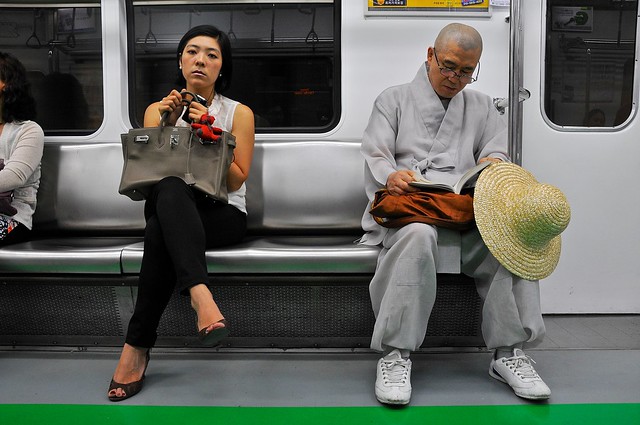 |
On the subway to the Mongolian Embassy.
|
Korean War Memorial
It's called the
War Memorial, but it's really more like a museum, and a great museum at that. They have tons of aircraft, ground machines, and even boats on display, many of which you can enter or at least peer into. It's like the
Air & Space Museum in Washington, DC, but dedicated to military vehicles and not air- and space-craft.
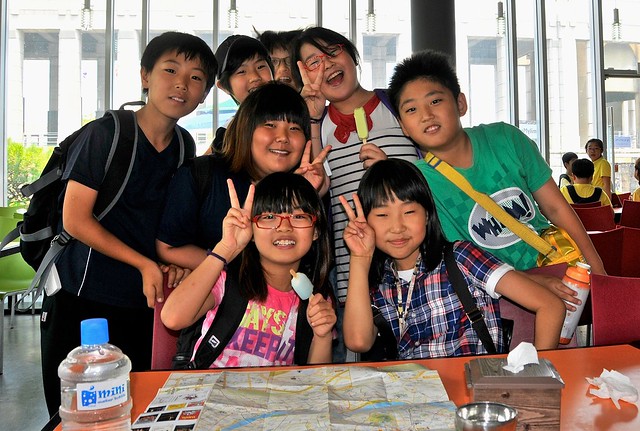 |
A
group of super-friendly
primary-school kids came to talk to me in the cafeteria as I was cooling
off and figuring out how to get to N Seoul Tower. Their teacher came
over to talk for a minute or so, and then the kids invited me to visit
their school in the
suburbs.
|


